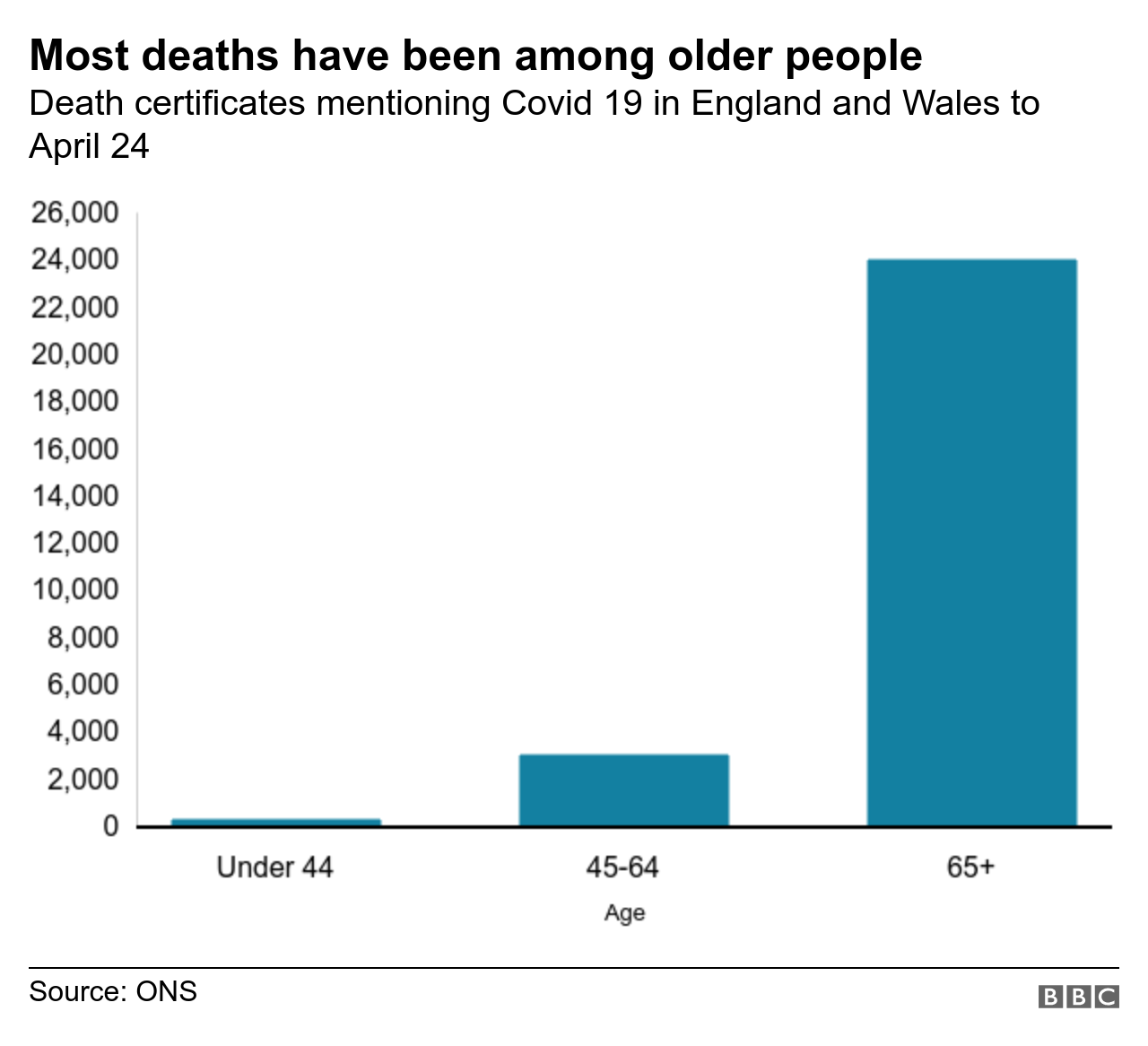This article by Nick Triggle, Health Correspondent, on the BBC App, certainly doesn’t tell the whole truth, but it’s the nearest the BBC has come to sensible, hysteria-free reporting in many weeks.
Titled “Coronavirus: Is it time to free the healthy from restrictions?“ it goes on to say:
The constant stream of bad news on coronavirus, from the rising number of deaths, to doctors and nurses risking their lives because of a lack of protective equipment has, understandably, caused great anxiety.
That much is clear from the proportion of adults worried about the threat they believe the virus poses to themselves.
Older people are the most concerned, but even among younger age groups the majority believe they are at risk.

But have we got this out of perspective? How much actual risk does coronavirus present?
The people who are most at risk are older people and those with pre-existing health conditions. The overwhelming majority of deaths has been among these groups.
But young people are, of course still, dying – by late April there had been more than 300 deaths among the under-45s. (Ed. A bit of hysteria here. That’s 300 out of over 40 million. And he doesn’t say they were both under 45 and Healthy. He also might have mentioned that this age group suffers some 5,000 suicides each year, and there are reports now of an increase in suicides due to lockdown. If suicides increase by 10%, that’s 500 deaths this year due to lockdown, not due to the virus.)
What is more, there are many more who have been left seriously ill, struggling with the after-effects for weeks. (Ed. Note weeks, not years.)
So how should we interpret that? And what does that mean for post-lockdown life?

Our constant focus on the most negative impacts of the epidemic means we have “lost sight” of the fact the virus causes a mild to moderate illness for many, says Dr Amitava Banerjee, of University College London.
The expert in clinical data science believes it is important not to jump to conclusions about the deaths of younger, seemingly healthy adults. Some could have had health conditions that had not been diagnosed, he says.
But he admits there will be otherwise healthy people who have died – as happens with everything from heart attacks to flu. (Ed. Yes. Every day.)
In future, we need to stop looking at coronavirus through such a “narrow lens”, he says. Instead we should take more account of the indirect costs, such as rising rates of domestic violence in lockdown, mental health problems and the lack of access to health care more generally. (Ed. He doesn’t mention the crashing economy. Perhaps he hasn’t noticed.)
A ‘Nasty Flu’ for Many
On Sunday Boris Johnson is expected to set out how restrictions will be eased in England. All indications are that it will be a very gradual process to keep the rate of transmission of the virus down.
But some believe we do not need to be so draconian. (Ed. No mention that other scientists have been saying exactly that for months, not reported by the BBC.)
Edinburgh University and a group of London-based academics published a paper this week arguing restrictions could be lifted quite significantly if the most vulnerable were completely shielded.
That would require the continued isolation of these individuals and the regular testing of their carers – or shielders as the researchers call them.
If we could protect them – and that would require very good access to quick testing and protective equipment – the researchers believe we could lift many restrictions and allow a “controlled” epidemic in the general population.
Good hand-hygiene, isolating when you have symptoms and voluntary social distancing where possible would be needed. But people could return to work, and school – in a matter of months. The majority could even be eating in restaurants and going to cinemas. (Ed. In a matter of Months? Sweden, Japan and others never did this. Life in those countries continues as in any other flu epidemic.)
For the non-vulnerable population, coronavirus carries no more risk than a “nasty flu”, says Prof Mark Woolhouse, an expert in infectious disease who led the research. (Ed. Give the BBC some applause for an almost true statement. Would have been better had he also mentioned that huge numbers are asymptomatic.)
“If it wasn’t for the fact that it presents such a high risk of severe disease in vulnerable groups, we would never have taken the steps we have and closed down the country. (Ed. Well, sort of. But for Adulterer Ferguson’s astronomical predictions we wouldn’t have closed the country.)
“If we can shield the vulnerable really well, there is no reason why we cannot lift many of the restrictions in place for others.
“The lockdown has come at a huge economic, social and health cost.”
It is, he says, all about getting the balance of risk right. (Ed. Correct. what a pity the BBC didn’t think of that weeks ago, rather than building the irrational fear they mention in the article, as though they played no part in it.)